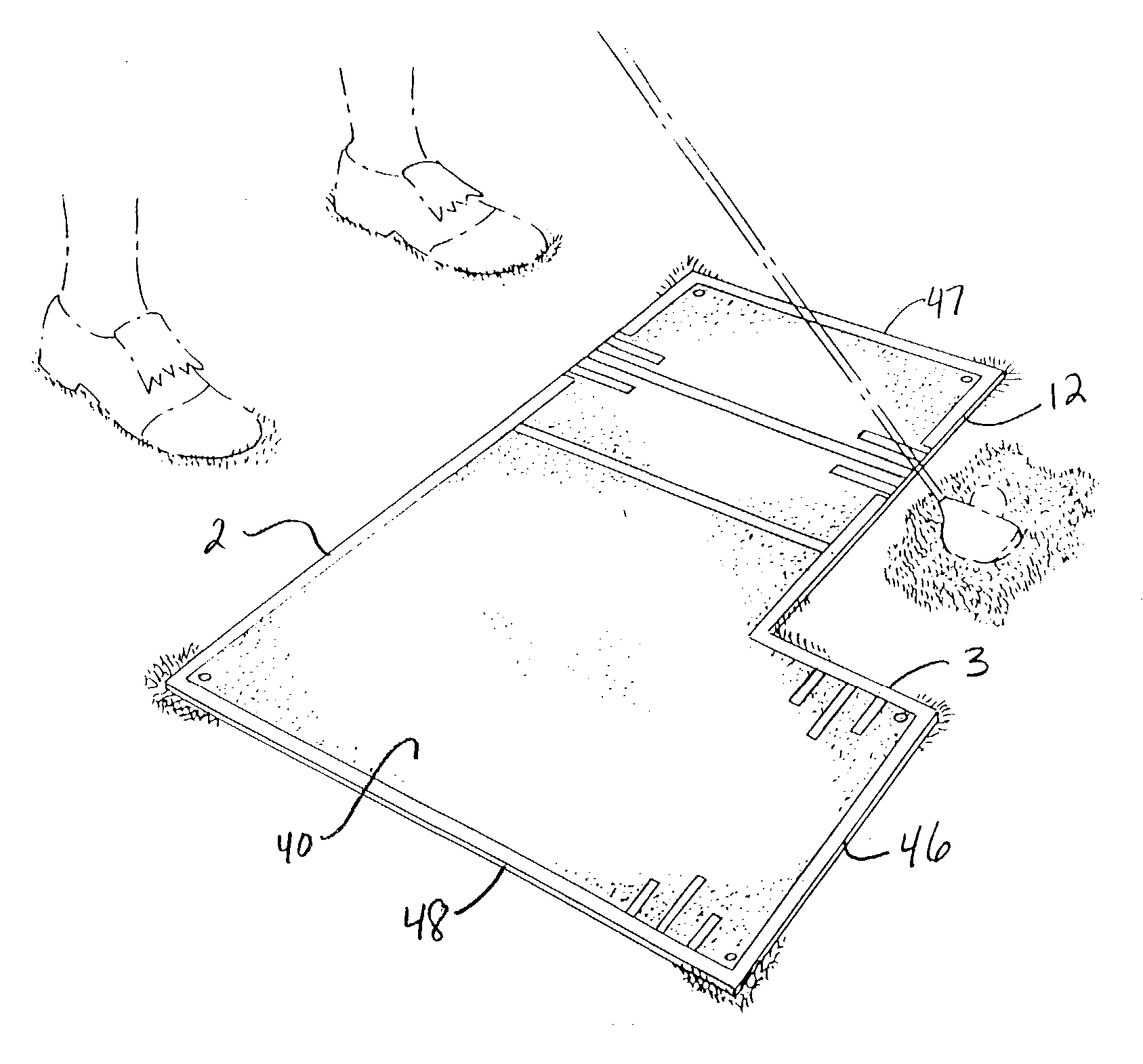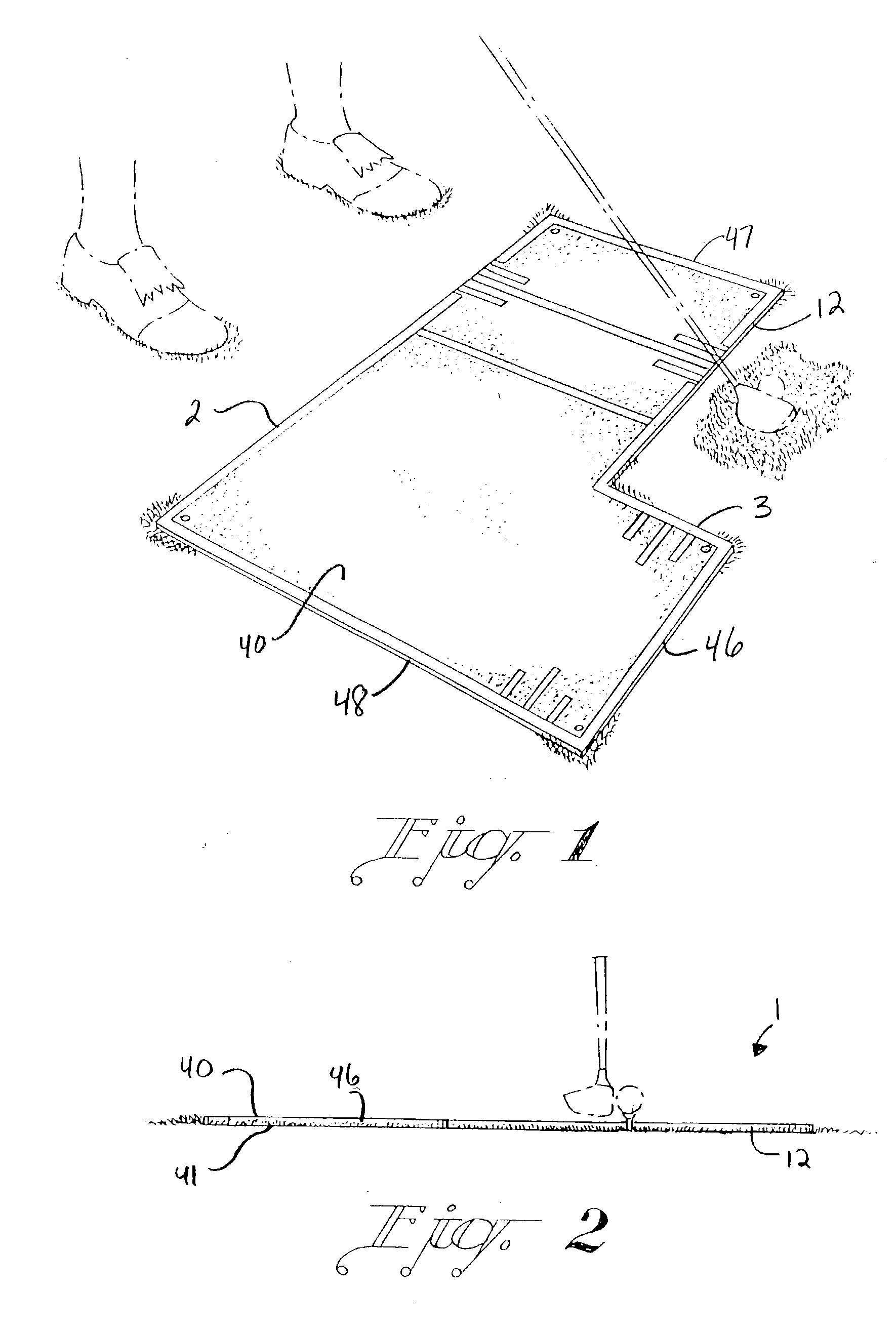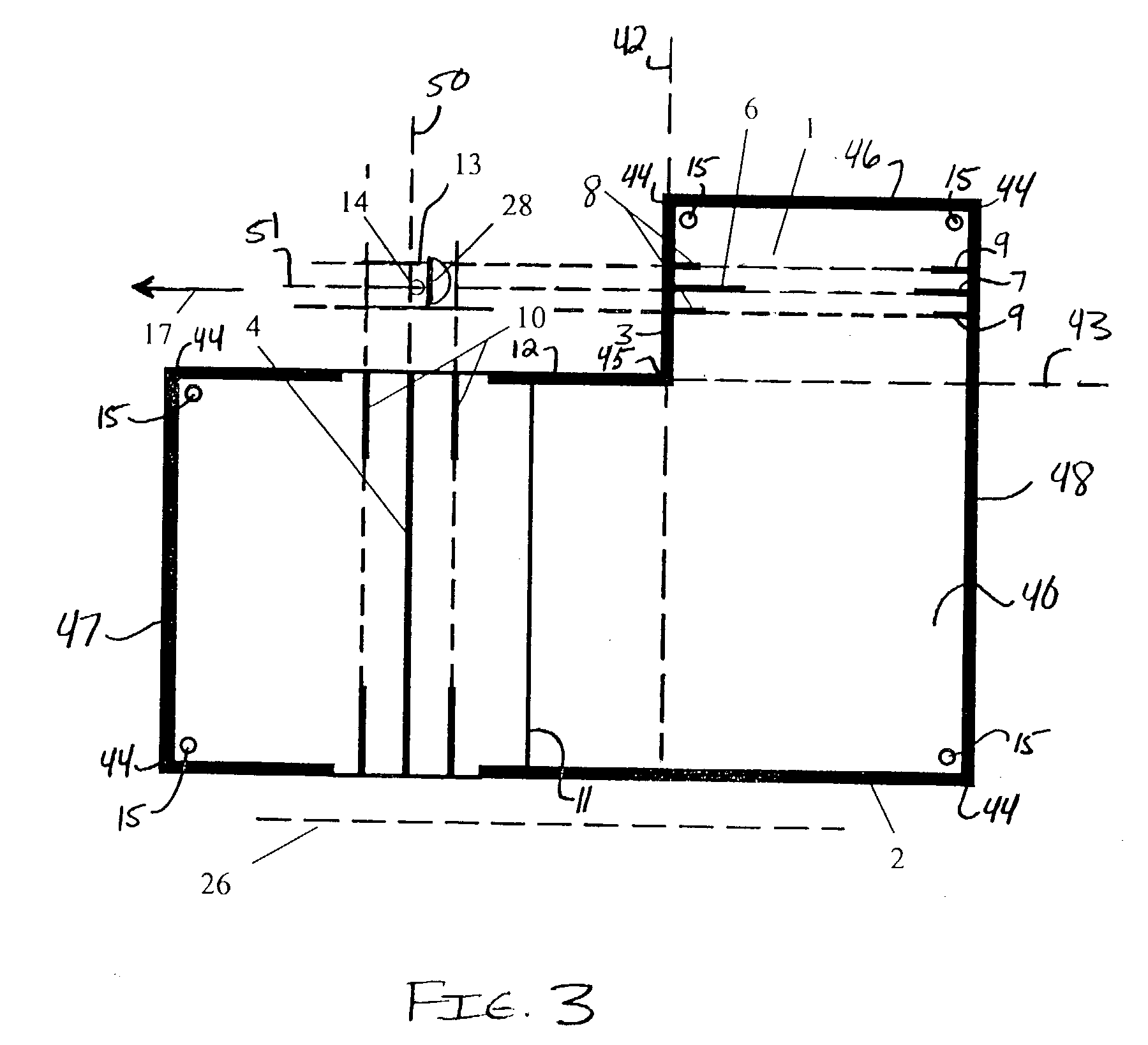Golf aiming and alignment training mat
a golf ball and training mat technology, applied in the field of golf training aids, can solve the problems of improper alignment of the trajectory path or ball-to-target line directly on the target, the inability to purposefully strike a golf ball in the described proper manner, and the inability to properly strike the golf ball
- Summary
- Abstract
- Description
- Claims
- Application Information
AI Technical Summary
Benefits of technology
Problems solved by technology
Method used
Image
Examples
Embodiment Construction
.
[0038] Additionally, the present invention provides a combination golf training mat and auxiliary alignment blade apparatus. The auxiliary alignment blade comprises a centered longitudinal blade axis, a superior blade surface, an inferior blade surface, a left blade end, a right blade end, a linear distal blade edge, and a linear proximal blade edge. Further disclosed are pivot fastening means cooperatively associated with the auxiliary alignment blade, which function to removably attach to the auxiliary alignment blade to the L-shaped mat adjacent the reference-alignment edge. The pivot fastening means are cooperatively associated with a user-selected, proximally located internal corner. The removably attached auxiliary alignment blade is pivotable about a blade pivot axis located at the selected internal corner and is designed to enable a golfer to align and aim for variably controlled golf ball flight trajectories described in more detail in the section below entitled, ALTERNATI...
PUM
 Login to View More
Login to View More Abstract
Description
Claims
Application Information
 Login to View More
Login to View More - R&D
- Intellectual Property
- Life Sciences
- Materials
- Tech Scout
- Unparalleled Data Quality
- Higher Quality Content
- 60% Fewer Hallucinations
Browse by: Latest US Patents, China's latest patents, Technical Efficacy Thesaurus, Application Domain, Technology Topic, Popular Technical Reports.
© 2025 PatSnap. All rights reserved.Legal|Privacy policy|Modern Slavery Act Transparency Statement|Sitemap|About US| Contact US: help@patsnap.com



